How In-App Messaging Can Boost Your Lead Intake
Team ChatSupport
February 23, 2022
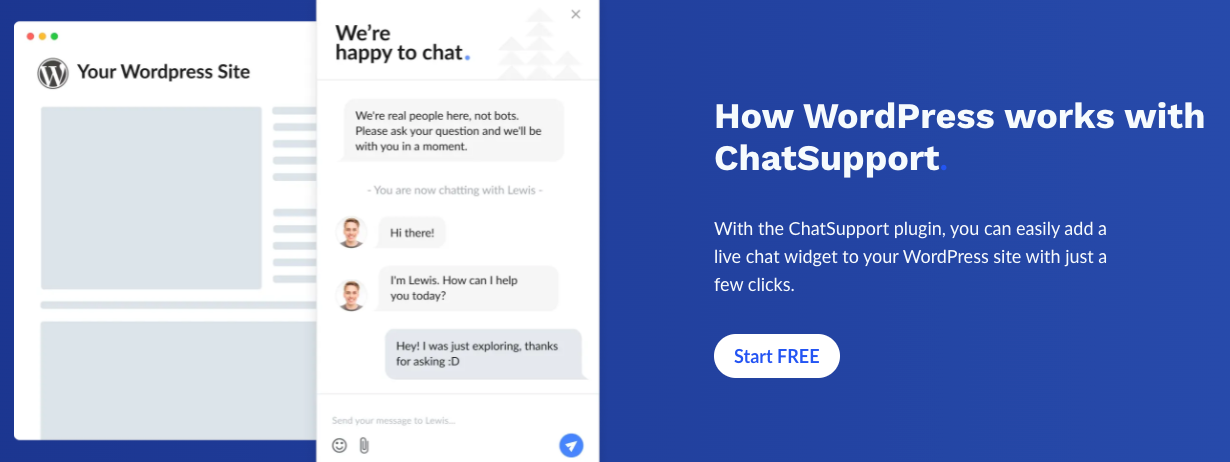
What is in-app messaging?
In-app messaging is a way to communicate with your customers while they are already engaged on your application or website. It’s a way to reach them directly, spark awareness and interest, and encourage them to take action.
Today’s in-app messages are more than simple pop-ups; they can include videos, buttons and links, images, GIFs, and other media. They can also be triggered in a variety of ways: when users open the app for the first time (or a specific number of times), after a certain amount of time spent using the app, or when users perform certain behaviors or actions within the app.
All of this adds up to one thing: More meaningful interactions with your customers at the moments that matter most — both to them and your business. In fact, in-app messages have a high open-rate of 75%.
In this article, we will review the value of in-app messaging to businesses who are ready to make use of it.
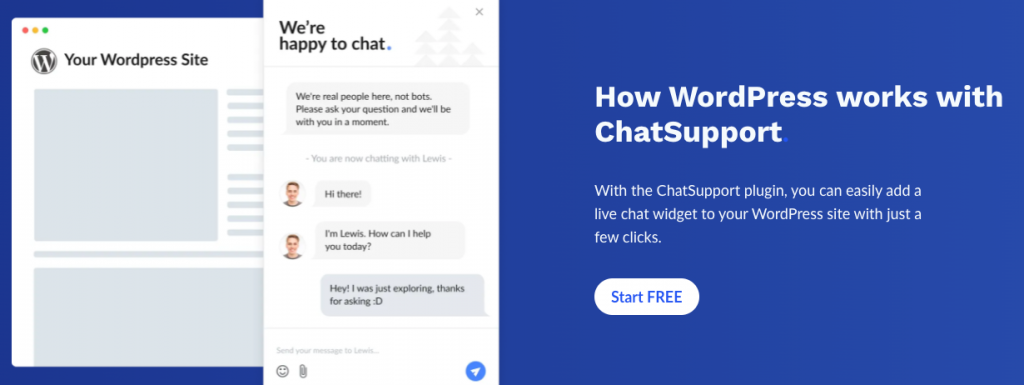
The differences between in-app messaging and push notifications
Push notifications and in-app messaging are two ways to engage with your users. Although they sound similar, the two are actually quite distinct and serve different purposes.
A push notification is a message that pops up on a mobile device and has an open rate of 90%. It can be sent at any time, and it isn’t a requirement for users to be actively using the app or platform to receive them on their screen. They can appear on the screen whether the phone is locked or unlocked, but they will disappear if the user dismisses them without doing anything more.
In-app messages are accessible only when a user is actively engaged with an app or platform. Users must be using their devices and have the app open to receive them. These messages appear as alerts that either ask for feedback or provide users with information about new features and discounts.
Both push notifications and in-app messages can be effective tools for engaging users, but it’s important to know the difference between the two before deciding which type of message you will use for your business.
Top 6 use cases for in-app messaging
In-app messaging is valuable for almost any business with a native mobile app or web application. It can be used for marketing and customer acquisition initiatives, as well as onboarding, customer retention strategies, customer engagement tactics, and more.
Read more about its use cases in detail below.
1. Onboarding
In-app messaging is the perfect tool for providing users with helpful tips, guided tours, and walkthroughs. In-app messages can be triggered based on specific actions, or at a time or location of your choosing.
Onboarding users can be tricky. If your product tour is complex or covers several features, chances are you have to spend quite a bit of time walking new users through everything. Using in-app messages to walk first-time users through the app makes it easy to ensure that they understand all the features and benefits of your product.
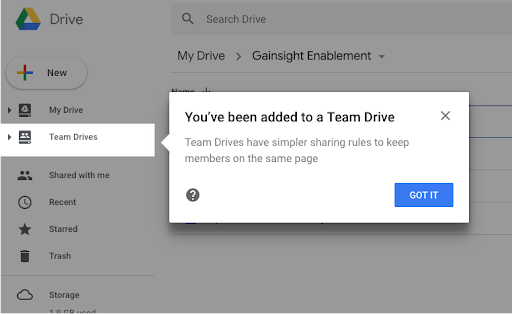
In-app messages are great for this because they pop up right when and where you want them to. Best of all, they’re mobile-optimized, so they work well on iOS and Android.
2. App updates and new features
The most obvious benefit of in-app messaging is to encourage your users to update to the newest version of your app. In the mobile ecosystem, promoting app updates has two main benefits:
- It enables you to deliver new features and enhancements to all of your users.
- It allows you to avoid having multiple versions of your app on the market at once. This simplifies development, maintenance, and analytics.
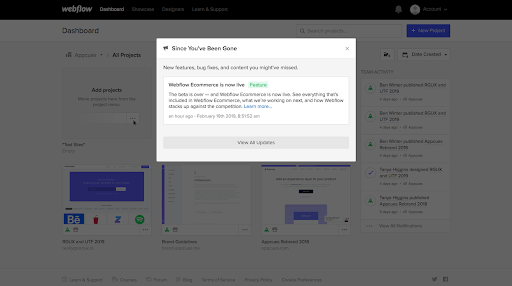
Another great use case for in-app messaging is promoting new features or content within your app. For example, if you have launched a new mobile e-commerce site, you can use in-app messaging to encourage existing customers to start shopping through their mobile devices instead of desktops.
3. Promotional messages
In-app messaging is an effective way to get your app users’ attention and convey promotional information to them. It’s a better alternative to banner ads, interstitials, and video advertisements for mobile apps.
It allows you to create a more natural flow of communication with your users in real-time. You can create app messaging campaigns that are contextual and relevant to the user. That also increases the chance of him or her paying attention to them.
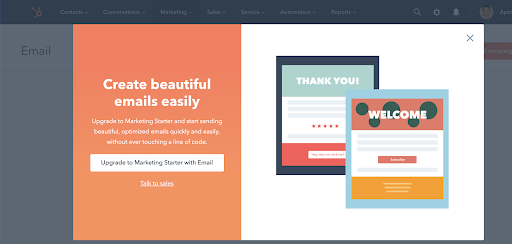
In-app messages are highly targeted: they are triggered by certain events in the app, such as a player making it to a new level, or a customer adding a new item to their shopping cart. This makes it possible to create personalized messages which enhance their customer experience and increase the chances of them being read by the recipient.
4. Live chat
We’ve found that in-app messaging is a great solution for customer service, especially in the travel, auto, and e-commerce industries It’s easy to implement, so a lot of companies start with in-app messaging as a way of delivering basic customer support through a real-time messaging strategy. As they grow and look to scale their support, they often move towards other channels such as phone or email.
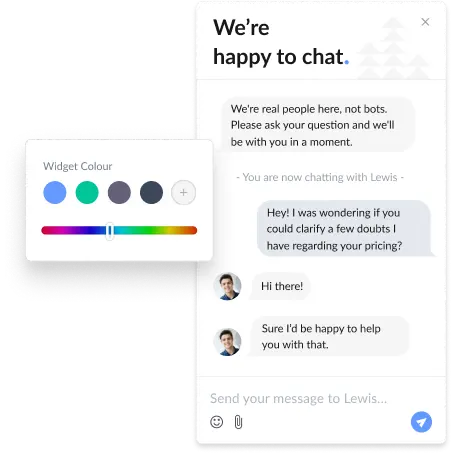
The benefits of in-app messaging over traditional live chat include the following:
- You can show messages only to users who are actually logged into your platform. You don’t need to bother all users with app notifications or disrupt their user experience, as only the active users are waiting to hear from you.
- You can target different messages based on user attributes like plan type, geographic location, usage patterns, and more, as opposed to just where they are on the customer journey.
- You can see when specific users are online or offline and send them messages.
5. User retention
Your business is more than just a product or service that you create and sell. It’s a living, breathing entity that requires ongoing maintenance to stay competitive in the marketplace. A key part of maintaining your app is keeping users engaged with it.
And one of the best ways to keep your users engaged and coming back for more is by using an in-app messaging tool. In-app messaging allows you to send personalized messages to your users while they’re actually using your app. This can be an incredibly effective way to increase user retention and boost engagement.
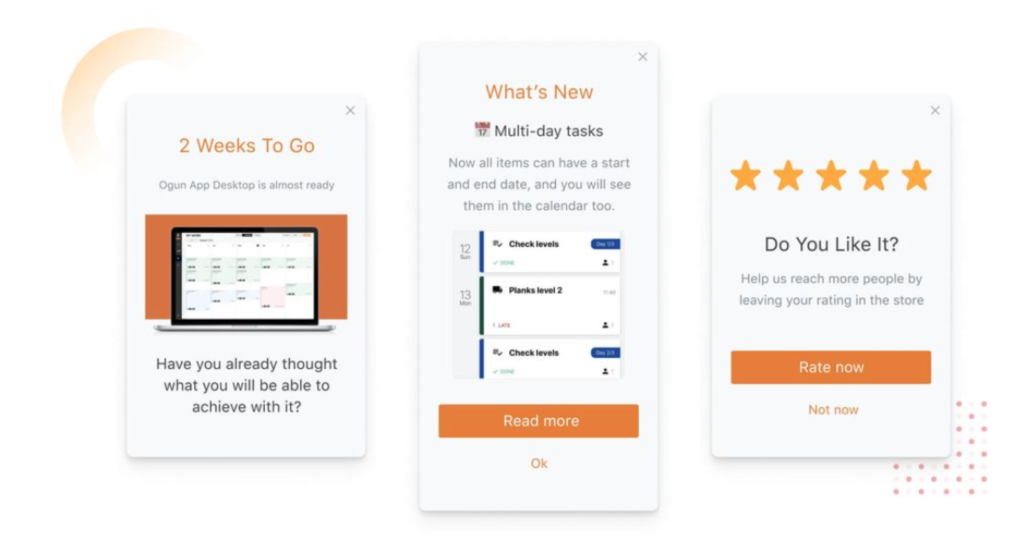
Unlike push notifications, in-app messages appear within the app itself and do not require opt-in from users. This makes them a powerful tool for driving engagement and retention for all of your customers, reducing churn in the long run.
6. Customer service messages
The in-app messaging feature is great for sending receipts to customers. Although most popular apps send out receipts automatically, customers occasionally forget to check their email or SMS inbox and consequently miss the receipt. With in-app messaging, customers can simply click “view receipt” to get a copy of the receipt sent directly to their app inbox.
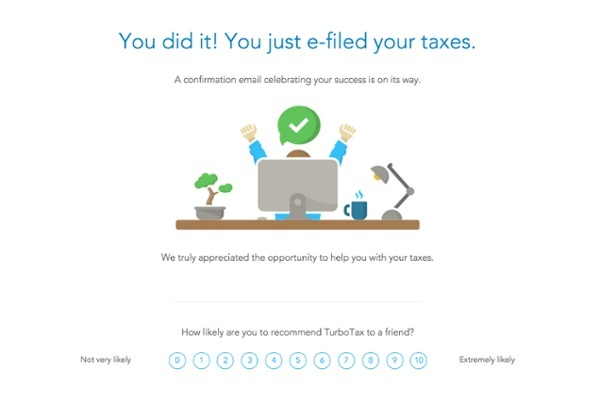
Holidays are another time when you might want to send special messages to your customers, such as informing them of store hours or any other relevant changes related to the holiday in question. With in-app messaging, you can reach your customers directly with this information and ensure that they are kept up-to-date at all times.
Finally, troubleshooting is another great use case for in-app messaging. If a customer has an issue with their purchase or any other aspect of your platform or the app API, they can easily contact customer service through the app inbox and receive quick answers to any questions they may have.
This ensures no customer will ever feel left out or ignored, which is especially important if your company has multiple products or wide segmentation among its user base.
Take advantage of ChatSupport’s App Messaging Features
It’s the age of automation and customer engagement. Your conversion rates are missing out if you don’t take advantage of in app messaging use today.
With ChatSupport, you can automate engagement with customers who visit your app or website. Leverage custom chat prompts to save you time and effort while seeing those customer engagement metrics shine. With our customizable chat widget, you can provide an experience your customers won’t soon forget.
To get started with app messaging, simply sign up for ChatSupport!
Like this article? Spread the word.